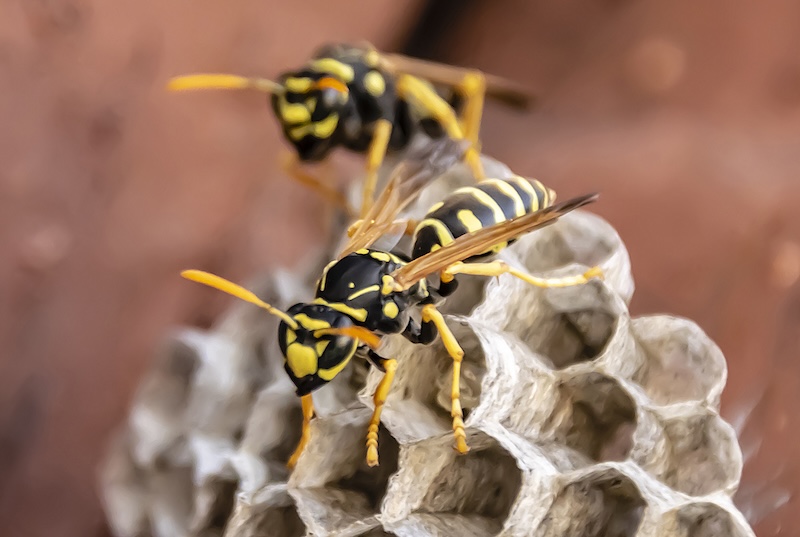What Type of Wasp Do I Have? Texas Homeowner’s Complete Guide
Professional Wasp Identification and Safe Removal Services Throughout Texas
When wasps start building nests around your Texas home, identification becomes crucial for your family’s safety and effective removal. At Home Run Pest & Termite Control, we understand that not all wasps are created equal – some are beneficial pollinators while others pose serious threats to your family’s well-being. Our certified pest control experts have encountered every wasp species common to Texas, from the docile mud daubers to the aggressive yellow jackets that can turn a peaceful backyard barbecue into a dangerous situation.
Texas’s diverse climate zones create the perfect habitat for numerous wasp species, each with unique behaviors, nesting preferences, and aggression levels. Proper identification is essential before attempting any removal efforts. Our experienced technicians know that most wasp species are solitary and generally non-aggressive. However, social wasps including paper wasps, yellow jackets, and hornets will fiercely defend their nests. Understanding these differences can mean the difference between a safe removal and a dangerous encounter.

Common Texas Wasp Species Every Homeowner Should Know
Red paper wasps are among the most common species in Texas, easily identified by their distinctive reddish-brown or rusty-red coloration and black wings. These wasps build their characteristic umbrella-shaped nests from chewed wood fibers. You’ll typically find red paper wasp nests under eaves, on porch ceilings, in attics, and behind shutters throughout East Texas.
Yellow jackets present a more aggressive threat to Texas families. These wasps have black bodies with yellow stripes and are often confused with European honey bees. However, their hairless abdomen helps differentiate them from beneficial bees. Yellow jacket nests are typically built underground but can also be found above ground in wall voids or attics.
Cicada killer wasps are among the largest wasps in Texas, despite their intimidating appearance with black-red bodies, yellow stripes, and brown wings, they are generally non-aggressive toward humans and will only sting if handled aggressively. These solitary wasps create burrows underground where they store paralyzed cicadas to feed their larvae.
Mud dauber wasps are easily recognizable by their distinctive mud nests that resemble elongated tubes attached to walls, ceilings, and other structures. These beneficial predators capture spiders to provide fresh food for their offspring and are generally non-aggressive, rarely stinging humans unless directly handled.
Understanding Wasp Behavior and Nesting Patterns
Texas’s long summers and mild winters create ideal conditions for wasp activity from early spring through late fall. Paper wasps begin building their nests in early spring, with each nest initiated by a single foundress wasp who locates a nest site, starts construction, lays eggs, and collects provisions for the growing colony.
Wasp nests start small but can grow significantly by summer. Understanding these growth patterns helps explain why early detection and removal are crucial for preventing larger, more dangerous infestations.
Social wasps become increasingly protective as their colonies grow. Most wasps deliver a painful sting and will act aggressively if you approach their nest, especially during peak summer months when colonies reach maximum size. They release specific pheromones that trigger coordinated attacks when threatened.
Effective Prevention Strategies for Texas Homes
Preventing wasp infestations requires targeting their basic needs: shelter, food, and water sources. Seal any potential entry points by repairing damaged screens, caulking cracks and crevices in your home’s exterior, and installing door sweeps on exterior doors.
Food source management plays a crucial role in wasp prevention. Empty and wash trash cans regularly, especially during summer months, since many wasps are attracted to garbage and leftover food. Cover food when eating outdoors and clean up spills immediately, as wasps are particularly drawn to sugary drinks and protein-rich items.
Eliminate standing water sources around your property, including bird baths, clogged gutters, and leaky outdoor faucets. Regular property inspections are essential – check frequently for early nest development in garages, sheds, crawl spaces, under foundations, and other protected areas.
If you have fruit trees, remove rotted and overripe fruit quickly, as these attract wasps searching for sugary food sources. Keep sweet-smelling plants and flowers at a reasonable distance from your home’s main entrances and outdoor living areas.
The Importance of Professional Wasp Removal
While DIY wasp removal might seem cost-effective, it often leads to dangerous situations. Handling a wasp nest without proper knowledge, equipment, or protective gear poses serious risks including location hazards when nests are difficult to reach, inadequate over-the-counter products, and lack of proper protective equipment.
Professional pest control ensures safe removal using industry-approved techniques and full protective equipment. At Home Run Pest & Termite Control, our trained technicians understand that every wasp infestation is unique and requires a customized approach based on species identification, nest location, and colony size.
Professional services also provide long-term prevention strategies. Our experts identify potential nesting sites, suggest structural improvements, and recommend ongoing maintenance practices that help keep your property wasp-free year-round.
When to Call Home Run Pest & Termite Control
Contact professional pest control immediately if you discover wasps inside your home, notice increased wasp activity around your property, find nests in high-traffic areas like playgrounds or patios, or if anyone in your household has known allergies to wasp stings.
Large or hard-to-reach nests require professional expertise for safe removal. Attempting to handle these situations yourself can result in multiple stings, property damage, or serious injury.
Don’t Risk Your Family’s Safety with DIY Wasp Removal! Contact Home Run Pest & Termite Control today for professional wasp identification and safe removal services. Our Texas-based experts have the knowledge, equipment, and experience to eliminate wasp threats and keep them from returning – call us now for fast, reliable protection!
